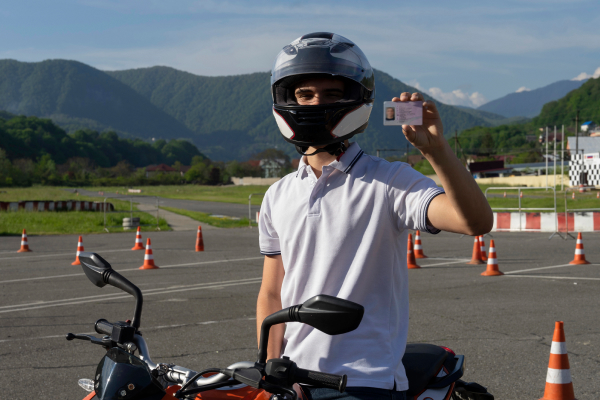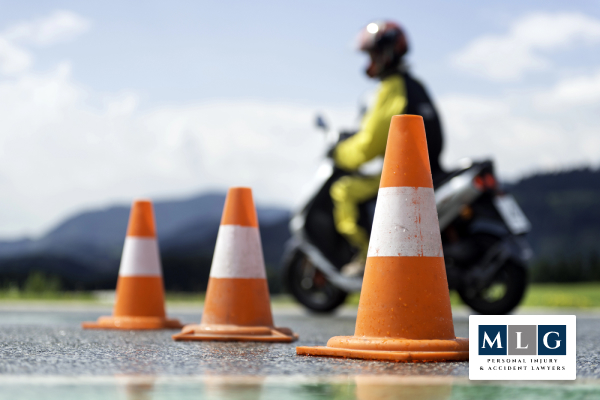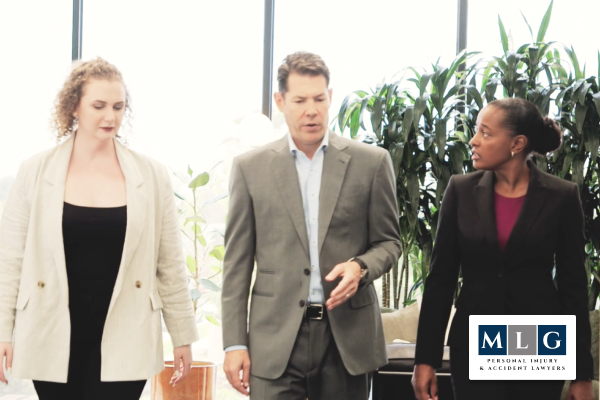
In California, obtaining the right motorcycle license is key for safe and legal riding. Marcereau Law Group is a leading law firm in Los Angeles specializing in personal injury cases. If you are thinking of getting a regular driver's license but don't know which is the right one for you, we are here to help you. We understand the legalities of motorcycle licensing and are here to guide you through the process.
There are two main types of motorcycle licenses in California: the M1 and M2. Knowing what is the difference between an M1 and M2 motorcycle license in California will help ensure you choose the right one for your riding needs.
The M1 motorcycle license allows riders to operate any two-wheeled motorized vehicle or motorized scooter. It provides the most comprehensive access to all motorcycles and scooters on California roads. With an M1 California motorcycle license, you can enjoy the full range of motorcycling experiences.
From cruising on highways to driving urban streets, an M1 license is preferred by most. In comparison, the scope of the M2 motorcycle license is more limited.
The M2 license permits riders to operate any motorized bicycle, moped, or scooter. This license suits individuals who prefer riding smaller, less powerful vehicles. It is mainly for travel on city streets. Know the differences if you want to select the one that aligns with your intended use and skill level.
When choosing a motorcycle, it's important to consider the gross brake horsepower or BHP, as it determines the vehicle's power and performance. The BHP can impact your riding experience and the type of license you may need.
As you decide between an M1 and M2 license, consider the type of motorcycle you plan to ride. The M1 license covers a broad range of two-wheeled vehicles. These alternatives make it ideal for those exploring different riding styles and environments.
The M2 driver's license is designed for riders who prefer smaller bicycles or scooters. Choosing the right license is important for legal compliance and ensuring your safety and enjoyment on the road.

To legally ride a motorcycle in California, you must get the appropriate license based on the type of vehicle you plan to operate. For an M1 license, you must be at least 16 years old or have a learner's permit. You also have to pass a series of tests, like written knowledge and skills tests.
The M2 has similar age and testing requirements. Those interested in motorbikes and scooters must adhere to them. Awareness of these requirements is the first step toward becoming a licensed motorcyclist in California.
California offers different motorcycle license classifications. The options are meant to accommodate various types of vehicles and rider preferences. The two main classifications are the M1 and M2 licenses, each catering to distinct types of motorized vehicles:
A Class M1 license in California allows you to drive any two-wheel vehicle operation, motor-driven cycle, or motorized scooter. An M1 license provides the most versatility, enabling riders to enjoy various motorcycling experiences. With an M1 license, you can explore the open road on a powerful motorcycle or navigate city streets on a nimble scooter.
Riding with an M1 license offers the freedom to choose from various motorcycle types, including sport, cruisers, and touring bikes. This flexibility makes the M1 license ideal for riders who want to explore different styles and performance levels. It also allows you to participate in group rides and motorcycle events requiring larger, more powerful bikes.
Obtaining an M1 license involves meeting specific requirements. Some of these requirements are passing written and skills tests. The Department of Motor Vehicles, or the California DMV, likes to ensure you are prepared. You are required to follow the responsibilities of riding larger motorcycles in case of a motorcycle accident. You can consult with a motorcycle accident lawyer in this case.
A Class M2 driver's license permits the operation of motorized bicycles, mopeds, and scooters. It is ideal for riders who prefer less powerful vehicles for short commutes and city travel, for those who are new to riding, or for those who prefer a more manageable, less intimidating ride.
Riding with an M2 license means you can enjoy the convenience of easily going through traffic and finding parking in crowded urban areas. Motorized bicycles and scooters offer excellent fuel efficiency. It makes them a cheap choice for short-distance travel. An M2 license is also a great starting point for new riders who want to gain experience before moving on to larger motorcycles.
Obtaining an M2 DL involves similar testing requirements. They are meant to ensure that riders understand the requirements of the road and can safely operate their chosen vehicle.
A Class C license in California allows you to drive a motorcycle with a sidecar attached. A sidecar can be used in a three-wheel motorcycle or a motorized scooter. Class C license is for riders who prefer the stability and unique experience of riding three-wheeled vehicles. With a Class C license, you can enjoy the thrill of motorcycling with the added benefit of enhanced balance and control.
Riding a motorcycle with a sidecar or a three-wheel motorcycle offers a different perspective on motorcycling. It allows you to share the experience with a passenger or transport more cargo. Riding this way is perfect for those who enjoy rides and appreciate sidecars' classic look and feel.
Obtaining a Class C license requires meeting specific criteria, including passing written and skills tests tailored to three-wheeled vehicles.
Electric bikes, or e-bikes, are bicycles equipped with fully operable pedals and an electric motor of less than 750 watts. In California, e-bikes are classified into three categories based on their speed and functionality. Class 1 and Class 2 e-bikes can reach speeds of up to 20 mph, while Class 3 e-bikes can reach speeds of up to 28 mph.
Operating an e-bike in California does not need a motorcycle license, but riders must follow specific regulations. These regulations are limited to age, speed limits, and helmet use.

Obtaining an M1 or M2 driver license in California requires meeting motorcycle license requirements. It involves completing a series of steps. These steps ensure that riders are skilled enough to operate their chosen vehicles safely.
Our team can help you be aware of these requirements and guide you through the process to get your motorcycle license.
To get a motorcycle permit, riders under 21 in California must complete a California Motorcyclist Safety Program training course, or CMSP. This course provides valuable instruction on safe riding practices by the California highway patrol, handling emergencies, and understanding traffic laws.
Completing the course fulfills the licensing rule and equips young riders with essential skills for a safe riding experience.
The CMSP motorcycle training course is a comprehensive program to teach new riders the fundamentals of motorcycle operation and safety. The course will provide classroom instruction and hands-on practice with experienced instructors.
Upon completing the course, participants get a certificate that satisfies the licensing need for riders under 21. Marcereau Law Group can assist you in enrolling in the CMSP course and provide extra resources to enhance your riding knowledge.

Understanding the differences between M1 and M2 motorcycle licenses is key for safe and legal riding in California. Marcereau Law Group are here to help you navigate the complexities of motorcycle licensing and ensure you are well-prepared to hit the road.
Please contact us if you have any questions or need help obtaining your motorcycle license. Our skilled team is ready to provide the guidance and support you need for a successful licensing process.
Schedule Your Free Consultation
"*" indicates required fields


"*" indicates required fields